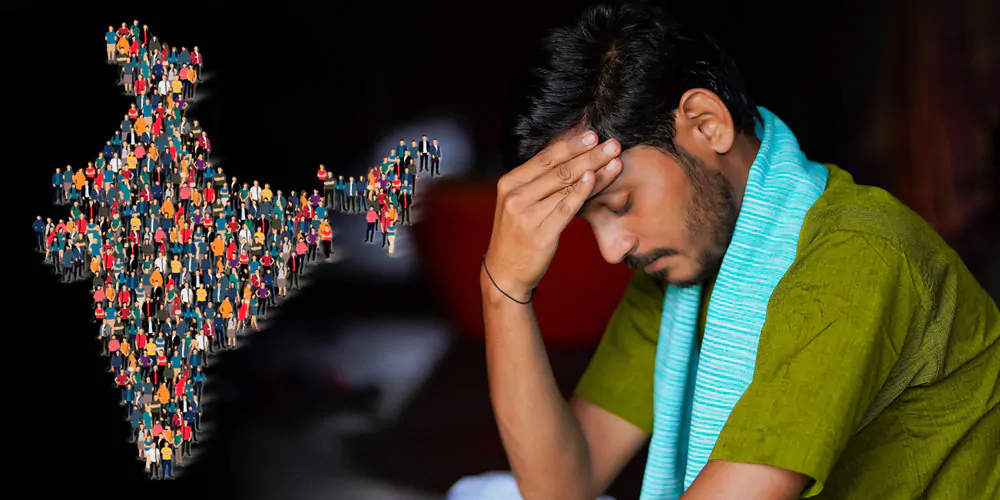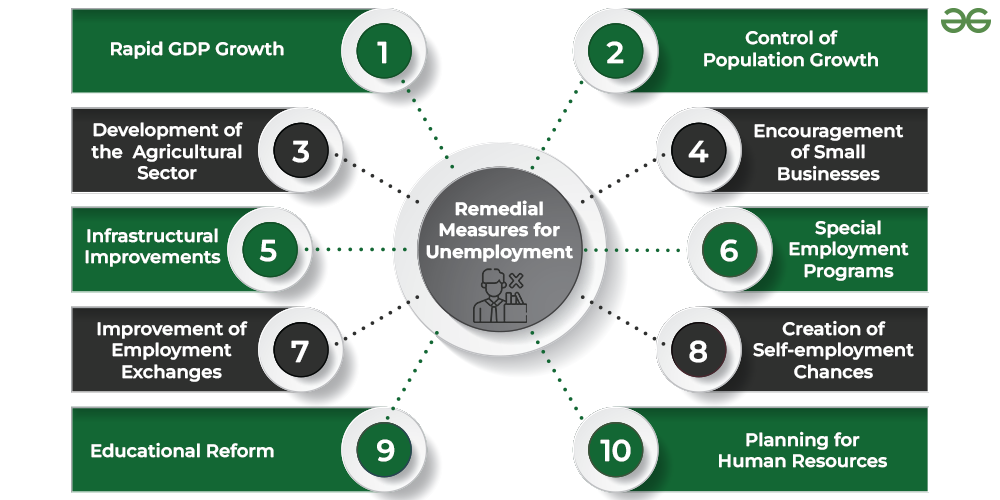
Controlling Unemployment with Digital Technology
Controlling Unemployment with Digital Technology
GS-3: Indian Economy (UPSC/State PSC)
Context:
Solving the problem of unemployment in India is a complex task, but it is necessary for sustainable development.
- Taking a comprehensive policy approach to both the demand and supply sides, focusing on skill development and ensuring inclusivity are important steps.
- Adoption of innovative financing mechanisms and digital technologies can help address this challenge.
About Unemployment:
Unemployment refers to a situation where a person actively seeking employment is unable to obtain a job.
- It is often used as an indicator of overall economic welfare.
- The National Statistical Office (NSO) defines employment and unemployment based on specific activities:
- Employed: Persons who are currently engaged in economic activities.
- Unemployed: Individuals who are looking for work but are not currently employed.
- Not looking for work or not available: Individuals who are neither actively seeking employment nor available for employment. The combination of employed and unemployed individuals is called the labor force, and the unemployment rate is calculated as the percentage of the labor force that is out of work.
- The calculation formula is as follows:
- Unemployment rate = (number of unemployed workers/total labor force) × 100

Official statistics:
- Official data (Periodic Labour Force Survey-PLFS) shows a decline in the national unemployment rate from 6.1% in 2017-18 to 3.2% in 2022-23.
- Despite a decline in overall unemployment rates, highly educated youth face disproportionate challenges in securing employment, remaining a consistent structural issue in India's economy.
- The analysis spanning from 1993-94 to 2022-23 demonstrates that individuals with higher education face consistently higher unemployment rates, notably reaching 13% in 2022-23 for graduates.
- Young graduates aged 18 to 29 encountered particularly high unemployment rates, with around 36% facing long spells of unemployment in 2017-18, declining to 27% by 2022-23 but still higher than previous periods.
Labour market
- India's labor market consists of two primary forms of employment.
- First, salaried employment, which is motivated by the desire of employers to make profits, and second, self-employment.
- The main concern here is salaried employment i.e. the formal sector which involves jobs with regular wages or relatively better wages.
Causes of reduction in demand for Labour:
- Historically, India has faced high levels of open unemployment and informal employment, commonly referred to as 'disguised unemployment'.
- The growth rate of employment of salaried workers in the non-agricultural sector has remained stagnant in the last forty years, the main reason for which can be attributed to the lack of opportunities in the formal sector.
- The demand for labor in the formal non-agricultural sector is influenced by two major factors. First, it depends on the output that firms can sell, leading to economic growth.
- Second, it is influenced by technological advancement which determines the number of workers required to produce a unit of output.
Affecting employment growth rate
- Production growth rate and labor productivity growth rate. In India, despite rapid GDP growth rates in the 2000s, employment growth rates in the formal non-agricultural sector remained unimpressive. This phenomenon is called jobless growth.
- Thus, high economic growth does not necessarily translate into high employment growth.
- Jobless growth in India makes the economic policy challenge qualitatively different from that of other countries.
- It is not just about high GDP growth but it is also about the specific factors that hinder the positive correlation between output growth and employment growth.
- For this reason, the high Kaldor-Verdun coefficient is more sensitive to labor productivity growth rate and production growth rate in India as compared to other developing countries. This means that despite the increase in production, the demand for labor does not increase accordingly.
What is needed for India's employment challenge?
- Experts say that it is clear from the available data that focusing only on GDP growth is not enough. To solve the problem of unemployment in India, there is a need to adopt employment-centric policy approach in addition to GDP growth. Only then can the unemployment rate be reduced.
- Experts say balancing fiscal discipline with increased public expenditure, prioritizing both short-term job creation and long-term skill development and ensuring inclusivity in the labor market are important steps towards transformational change.
Government employment generation programs
- Self-reliant India Employment Scheme (ABRY)
- Prime Minister Employment Promotion Scheme (PMRPY)
- Mahatma Gandhi National Rural Employment Guarantee Act (MGNREGA)
- Livelihood – National Rural Livelihood Mission (NRLM)
- Pt. Deen Dayal Upadhyay Rural Skills Scheme (DDU-GKY)
- PM-Swanidhi Yojana(PM-SNY)
- Pradhan Mantri Kaushal Vikas Yojana (PMKVY)
Way forward to balance demand and supply:
- Macroeconomic restructuring: Re-evaluation of the macroeconomic framework is necessary to include employment as a central theme.
- Promotion of labour-intensive sectors: To link economic growth with employment creation, it is necessary to promote labour-intensive sectors.
- Skill enhancement of workforce: It is necessary to improve the quality of workforce through better education and health services.
- Bridging the skill gap: It is essential to reduce the skill gap through targeted training programs and partnerships with industries.
- Public employment generation: It is important to implement direct public employment generation initiatives to stimulate labor demand.
Conclusion:
- Economic growth without meaningful employment promotes inequality and undermines development.
- Ultimately, by adopting innovative solutions and reimagining the macroeconomic policy framework, India can address the challenges of jobless growth.
- Due to the prevalence of digital technology, automation and artificial intelligence, the scenario of jobs in many sectors has changed in the last decade and a half and it is continuously changing. The government should closely understand this change and pay attention to it.
Source: The Hindu
-------------------------------------
Mains Question:
Unemployment rate and labor market can be balanced with digital technology, Discuss.